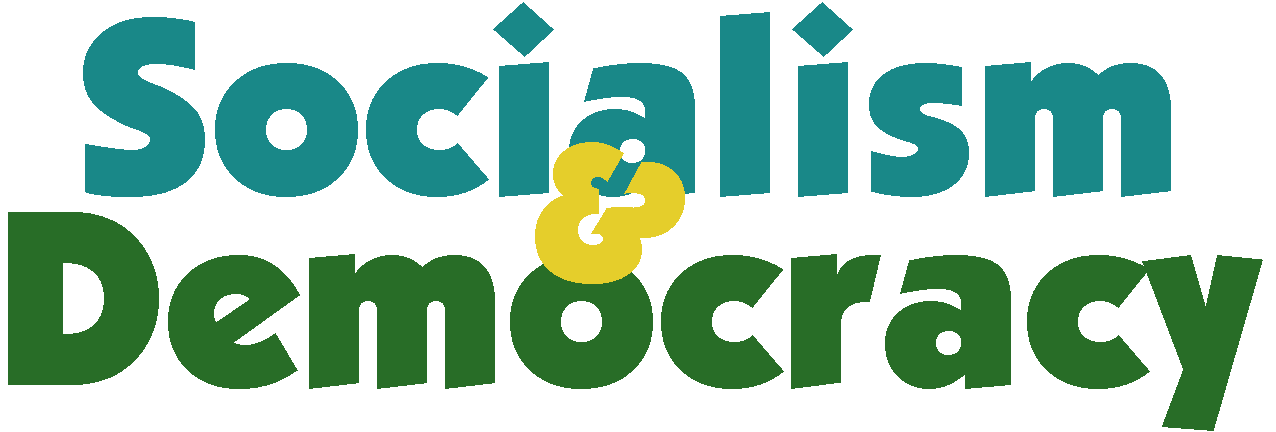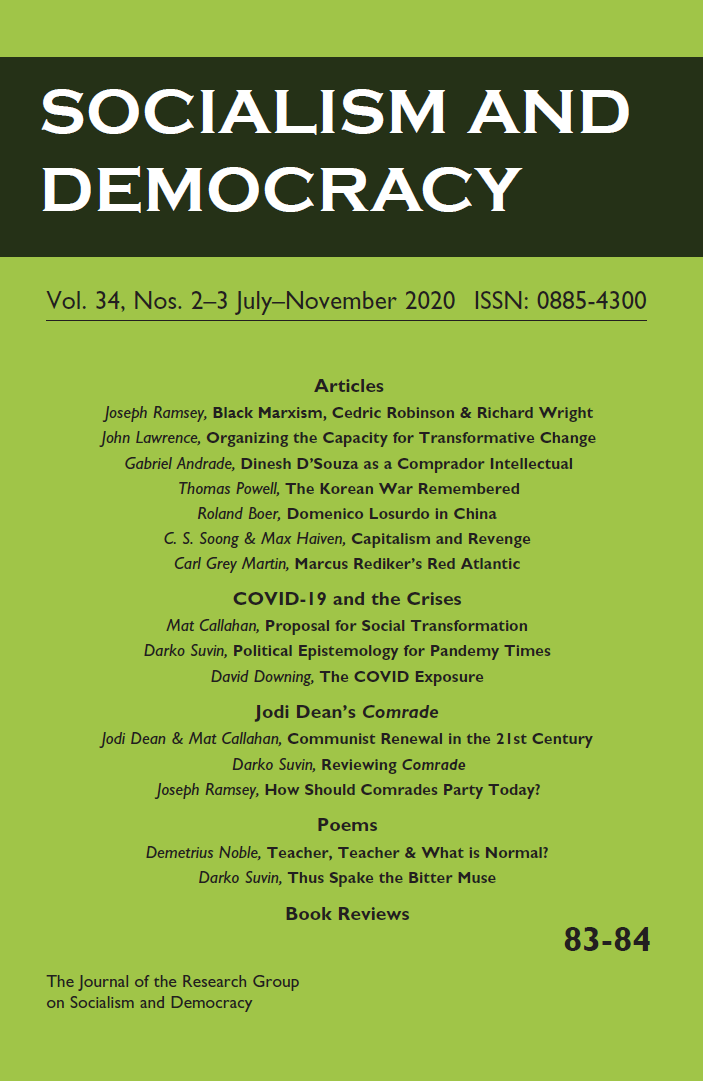Rob Wallace, Dead Epidemiologists: On the Origins of COVID-19. (Monthly Review Press, New York, 2020) 260 pages. $17.00.
Rob Wallace begins his latest book with a confession:
Late March this year [2020], I’m lying on my bed gasping for breath … A half hour into the evening’s panting – and nothing so pleasurable as the noise implies – it’s a bit of a wonder that I am now what I study. I’ve got COVID-19 and in my lungs something whose ancestor circulated among bats in greater Yunnan, on the other side of the planet, maybe only the year before.
Wallace had contracted COVID-19 while traveling from St. Paul, Minnesota, to Jackson, Mississippi, by way of New Orleans to attend a conference on racial injustice and health. He admits that he probably spread the disease to others while on this journey.
The preface describes Wallace’s saga in getting his COVID-19 diagnosis and also presages the contents of the book. The US system of health care, among other systems, is broken – crumbling before our eyes, and Wallace knows the culprits who are bringing down this and other vital human financial and welfare structures both in the US and worldwide. They reside in racial injustice, environmental injustice, financial injustice, and a general lack of caring on the part of multinational corporations toward those who serve them, epidemiologists included.
Describing himself as an evolutionary biologist and public-health phylogeographer with twenty-five years of experience, Wallace has worked on life-threatening pandemics for the entirety of his career. Therefore, his own account of his battles with the US-health-care system in order to obtain his COVID-19 diagnosis is cogent. After returning to St. Paul from the conference, he is ultimately diagnosed via the internet, having never seen a clinician in person. This sets the tone for the remainder of the book. Another admission he shares is the following:
No one gets to walk through this in the clear, however, no one. We are all bonded to epochal failures in leadership and institutional cognition. What, for instance, was someone who had worked through COVID’s imaginarium early on doing flying a week into March? I too had been infused with a peculiarly American moment, wherein financial desperation meets imperial exceptionalism. I too had to travel for work and nothing was going to happen to me.
One of the descriptions on the back cover of the book encapsulates Wallace’s writing style: “This is radical thinking in the very best sense. Written in perfect, pissed-off, punk-rock eloquence and fury” (Ben Ehrenreich).
A large number of Wallace’s colleagues, some of whom also participated in the book’s writing, are acknowledged by the author. Their contributions to this publication should be made clearer. Some articles have been previously published, notably in Monthly Review. There is great variety of styles among the articles, no doubt due to input from the co-authors. The arrangement of the book is linear, beginning in March and ending in July 2020. There is pronounced progress in the thinking of the authors about the etiology of COVID-19 during this short window.
Although Wallace creates intrigue with the title for the book, he mentions dead epidemiologists only twice. However, an impressive 678 citations bolster the arguments contained in the book. The authors present solid evidence in their indictment of the global, multinational-capitalist structure as its collective greed chokes the very life from every living entity on earth.
Wallace and his co-writers take us on a deep dive to explore how we are now facing a modern-day version of a deadly scourge that will kill unknown millions of people before—or if—it subsides. Wallace provides lucid descriptions of several theories as to the geographic origin of this and other recent viruses that are contagious among humans. He seems not to care about where the virus came from specifically but cares more about understanding how its particular genetic structure has evolved and spread out of the massive stranglehold that multinational capitalist companies and their government enablers have created through their control of the production and distribution of food and other human resources.
Throughout a dense, sometimes jargon-packed series of articles, one can discern a couple of possible meanings for the title of the book. The preface gives us our first inkling into Wallace’s meaning: corporate epidemiologists, beholden for their jobs to multinational corporations, have enabled the emergence of deadly viruses while playing the role of loyal servants to their employers (14). They have, in essence, become dead to the consequences of their work on behalf of huge corporations. They simply conduct forensic and quantitative research after the fact, crunch numbers, and give their employers the moral and scientific coverage needed to displace the blame for deadly outbreaks. They take little or no responsibility for standing back and observing their own roles. They are happy when conspiracy theorists spread rumors that deadly viruses may have been unleashed by nefarious (read Communist) sources either on purpose by bad nation states, or their scientists are too sloppy to be able to keep the viruses safely contained. They plead not guilty to destroying worldwide ecosystems with their domination of farmland and the dissemination of their consumer goods.
The next mention of dead epidemiologists occurs on the final page, and this is most revealing:
Multinational agribusiness, mining, logging, and real estate chop at the tree of life for greed first and foremost, the planet and its people bedamned. Pleased at the ruins it surveys, the system, tended to by dead epidemiologists, served up COVID-19 on its proverbial arm. Upon this perch, the virus now leisurely eats through humanity alive.
Is this a reasonable indictment? Is there sufficient evidence that epidemiologists have collaborated in fulfilling their roles in finding the origins of the virus and then walking away from the consequences without recognizing their own complicity in the larger interactions between humans and nature? Are they doing reductionist, quantitative analysis after the pandemics breaks out and not doing a deep dive analysis of the structure they are propping up? In Wallace’s telling of the story, this is, indeed, the case. Hannah Arendt’s evocation of the banality of evil comes to mind. It would be refreshing to hear a rebuttal from some of these professionals.
Some of the articles in the book flow better than others, but all help build on the central theme of the book: that capitalism is killing humanity at a greater speed than at any time since its inception, and there are a lot of collaborators in this mass murder of people, animals, plants, soil, and the totality of the planet.
Wallace blames “humanity’s unprecedented connectivity” and the negligence of governments and corporations in failing to prepare for an epidemic of these proportions. Far more dangerous than understood, he also shows how all of this is connected to food markets and transportation, and thus how fast the virus spreads. He is unsparing in describing his fellows in the field of epidemiology:
Almost the entirety of the profession is presently organized around post hoc duties, much like a stable boy with a shovel following behind the elephants at a circus. Under the neoliberal program, epidemiologists and public health units are funded to clean up the system’s mess, while rationalizing even the worst practices that lead to many a deadly pandemic’s emergence.
A recent article by the International Committee of the Fourth International affirms Wallace’s approach. The authors state that the “normalization of death” has its origins in class interests that treat human health and economic wealth as comparable. “Once the legitimacy of the comparison and prioritization is accepted—as it is by the political establishment, the oligarchs and the media—mass death is viewed as unavoidable.” On this we all agree.
Allan Ainsworth, Ph.D.
Community Health Center, CEO
Professor, Anthropology and Social Medicine, Retired.
allanain@me.com

